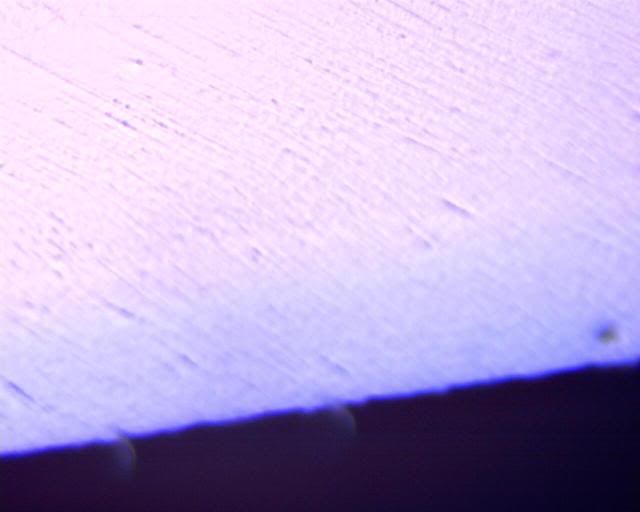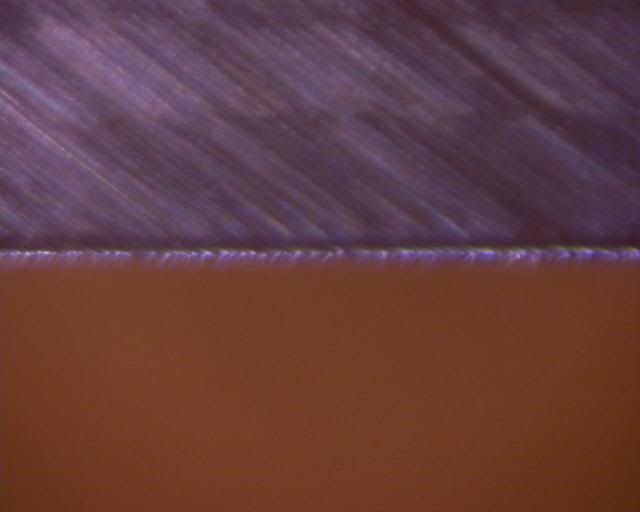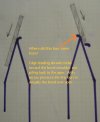i think we're saying the same thing with regard to the use of microbevels and deburring. I was first stating that many makers in japan do use them, and also will recommend them in many cases (but not all... maybe not even most depending on the region). However, for using a microbevel technique to deburr, i was saying that its not a good way of doing this. It can be done, but requires followup stropping and whatnot to get rid of the remaining bits.
Likewise, microscopes have been of great help
I guess after re-reading my post, i didnt clarify at all. In what i said, i meant to say that microbevels can reduce the size of a burr, but its nowhere near the best way of doing this. And doing this well through microbevels takes skill, so its not just a natural result of putting a microbevel on an edge.
Likewise, microscopes have been of great help
I guess after re-reading my post, i didnt clarify at all. In what i said, i meant to say that microbevels can reduce the size of a burr, but its nowhere near the best way of doing this. And doing this well through microbevels takes skill, so its not just a natural result of putting a microbevel on an edge.






